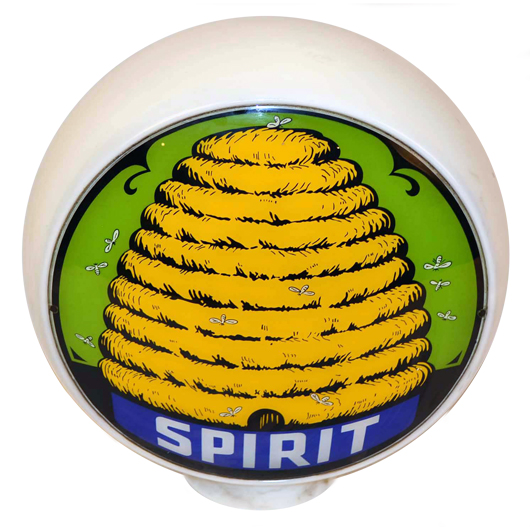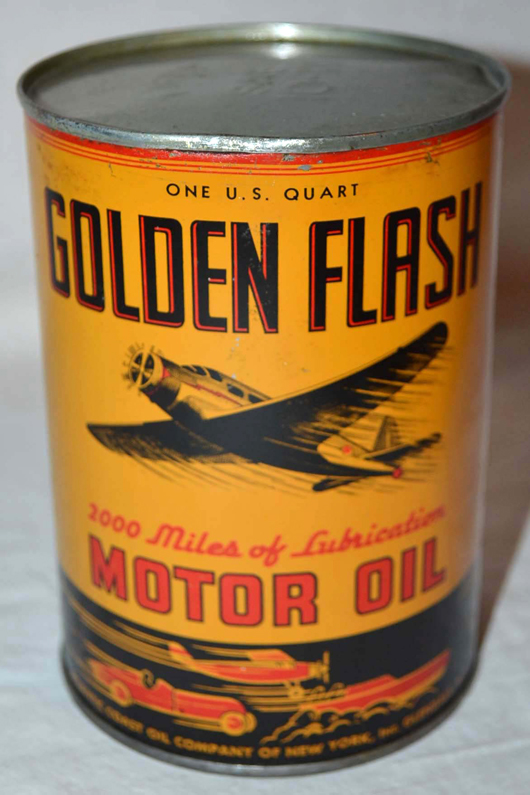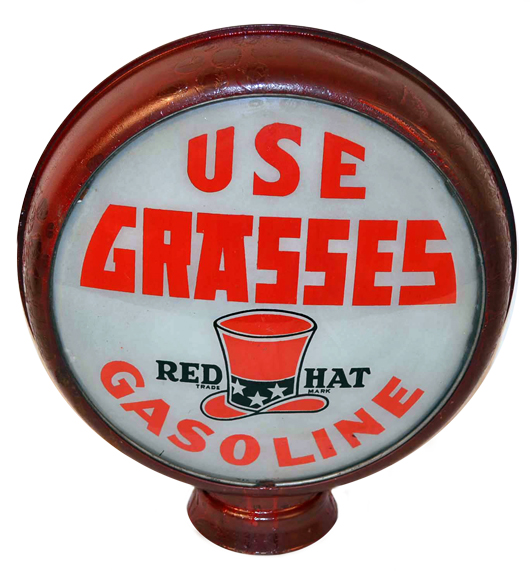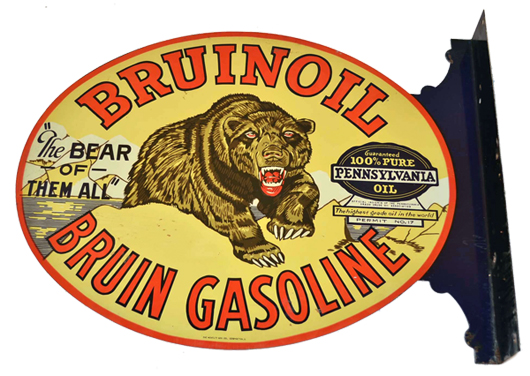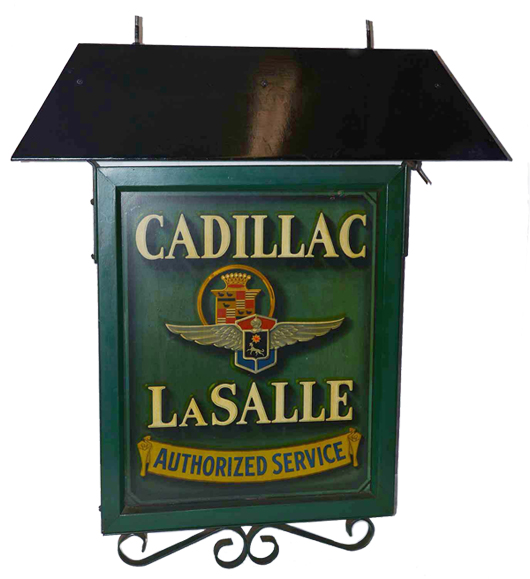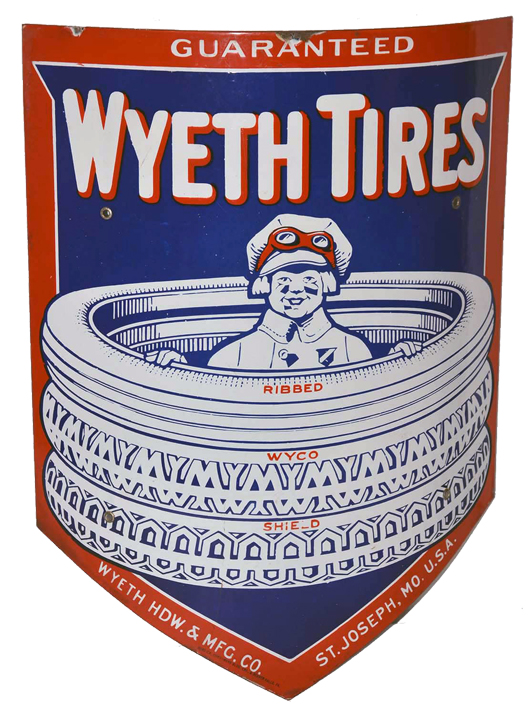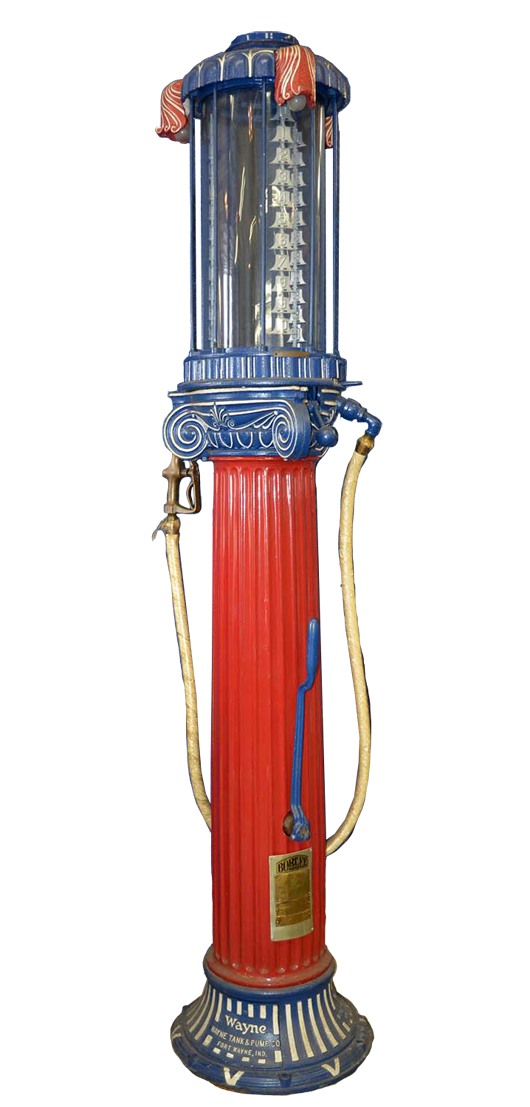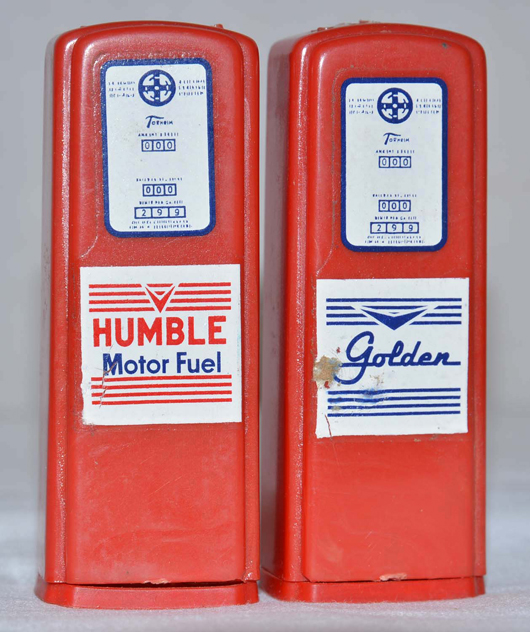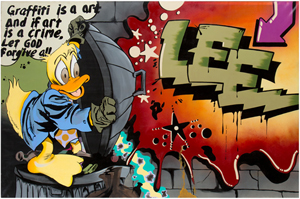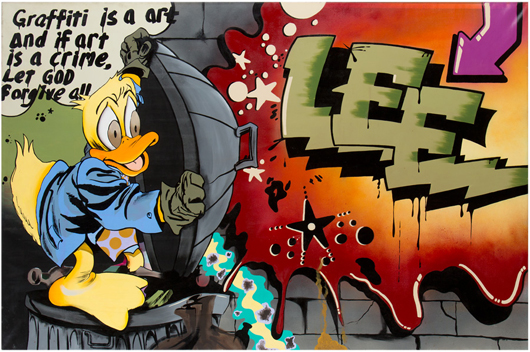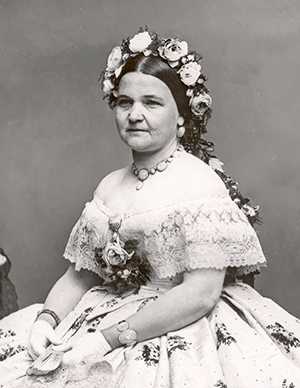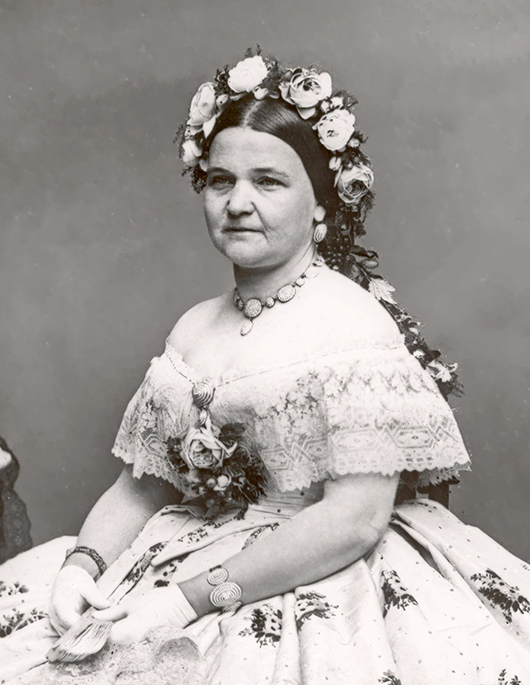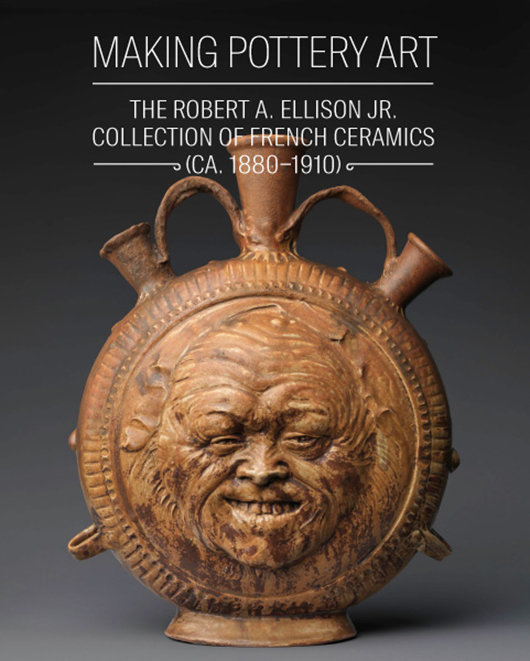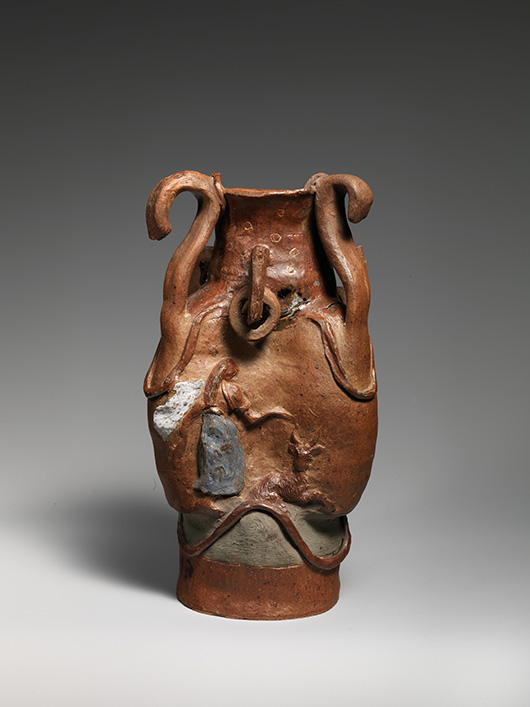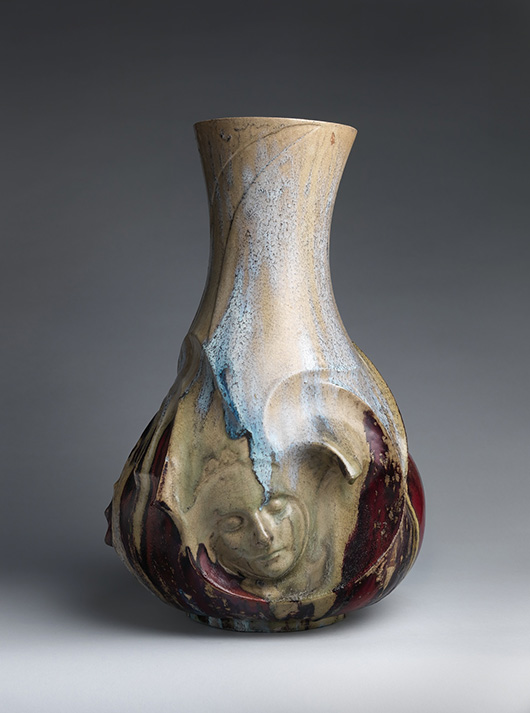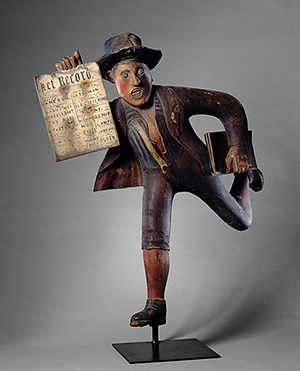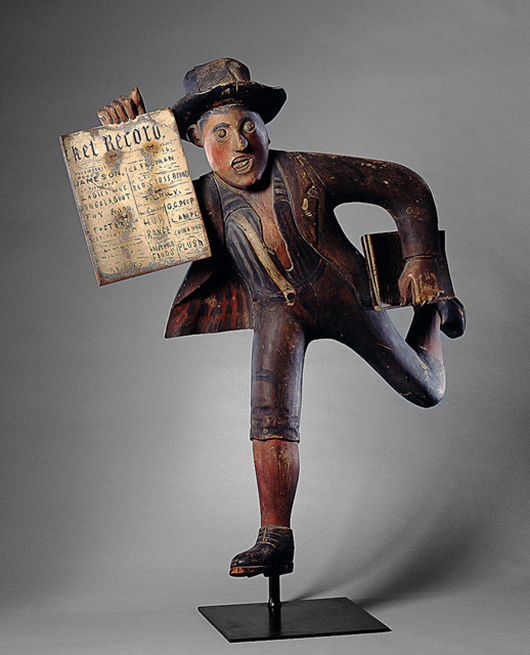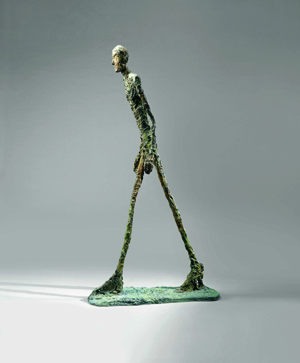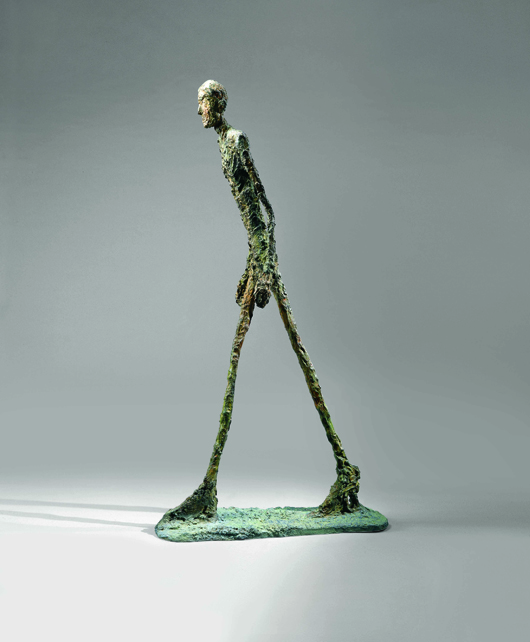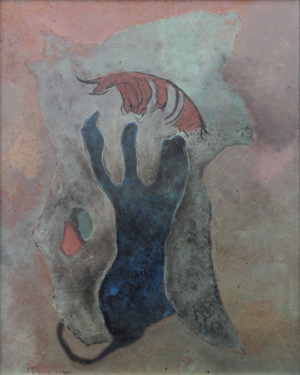
Highlighting the 20th century American paintings category is Theodoros Stamos’ (American/Greek, 1922-1997) ‘Petroglyph’ an oil on Masonite being offered for $30,000-$50,000. Clars Auction Gallery image. OAKLAND, Calif. – On Sunday, Feb. 16, Clars will host one of the most significant sales in their history. Across the board, all categories will offering exceptional works in fine art, decoratives, furnishings, Asian antiques and art and estate and fine jewelry. LiveAuctioneers.com will provide Internet live bidding.
Turning first to Fine Art, Clars will offer a monumental work by one of Australia’s most collected, as well as renowned, 20th century contemporary Aboriginal artist Clifford Possum Tjapaltjarri (1932-2002). His paintings are held in numerous collections, galleries and museums, including the National Gallery of Australia, the Kelton Foundation and the Royal Collection. Estimated at $200,000-$300,000, Possum Dreaming (1994) is a richly colorful, yet powerful, acrylic “dot painting” on canvas that was inspired by the ancient Aboriginal mythology known as the dreaming, or dreamtime. Dreaming emphasizes a visual interpretation through color, patterns and space of a particular animal’s trails (a possum’s) in relation to the earth and the sun to denote specific times of the day. Combined with strong figurative elements over a highly descriptive background of carefully placed “dots,” the result is both visually spectacular, as well as mesmerizing. The two, handmade painting sticks used by Clifford Possum to create these “dots” will be included in this lot. Furthermore, accompanying the painting is a DVD with documented video footage of the artist displaying, describing, as well as, signing and dating the actual painting Possum Dreaming.
Highlighting the 20th century, American paintings category is Theodoros Stamos’ (American/Greek, 1922-1997), Petroglyph (1947), an oil on Masonite being offered for $30,000-$50,000. Petroglyph is a quintessential example of the artist’s paintings from his time as one of the Irascible Eighteen.
Coming from Joan Brown (1938-1990), a Bay Area Figurative Movement artist, the painting titled Model in Upstairs Studio H2 (1975), is being offered with an estimate of $10,000 to $15,000.
A haunting painting of the famous Blue Dog by the recently deceased New Orleans artist George Rodrigue (1944-2013) will be offered with an estimate of $25,000-$35,000. This rare painting was created in 1991 at the turn of Rodrigue’s career from Louisiana landscapes and commissioned works to only his signature Blue Dog.
European paintings and sculpture, some that have lasted several centuries, will add to the impressive mix of fine art offerings at Clars. Topping off the list is a rare, 17th century painting by Dutch painter, Jan Albertsz Rootius (1615-1674) titled, Portrait of a Young Boy (1666), which is offered at $20,000-$40,000. One of the most impressive, bronzes to be offered at Clars is one after Pierre Lepautre (French, 1660-1744) titled Aeneas Carrying His Father Anchises, with an estimate of $15,000-$20,000. Standing at 41 inches in height, this dramatic sculpture depicts the moment that Aeneas carried his father, the elderly Anchises, and his son Ascancius from Troy after the city had been taken by the Greeks. In the 19th century paintings category, a spectacular example, with impeccable provenance, by German artist Adolf Schreyer (1828-1899) titled The Imperial Courier will be offered at $10,000-$20,000.
Turning to modern Europe, works by Miro, Chagall and Matisse are expected to gather global appeal. L’exile vert (1969) by Joan Miro (Spanish, 1893-1983), is a massive color etching and aquatint with carboundum, estimate: $15,000-$20,000. The Blue Village (Second version) (1974) by Marc Chagall (French/Russian, 1887-1985), is a lithograph in colors on japan paper. This rare edition of one of Chagall’s most important lithographs should easily attain its $20,000-$25,000 estimate. Rounding out the fine art prints section is Le Loup, Plate VI, (1947) by Henri Matisse (French, 1869-1954), from his famous Jazz Suite which will be offered at $8,000-$12,000.
Important works by California artists will be leading off the sale. From Society of Six artist William Henry Clapp (1879-1954) his work titled Estuary Home (1937) is estimated at $20,000 to 30,000. Little Home, a lovely oil on board by Maynard Dixon (1875-1946) from 1937 (the same year Dixon married Edith Hamlin in Utah), will be offered at $20,000-$40,000. Two monumental California mountain landscapes will be highlighted, one of which is Sierras with Blue Sky by Edgar Alwin Payne (1883-1947) with an estimate $15,000- $25,000. An equally impressive painting of a snowcapped mountain by Jack Wilkinson Smith (1873-1949) titled Sierra Mountains will also be offered at $10,000-$15,000.
Postwar sculpture will be yet another fine art category of focus at Clars. Two geometric wood sculptures will be offered by the important Brazilian sculptor, Amilcar de Castro (1920-2002). They are estimated to achieve $10,000-$15,000 each. From the Collection of David C. and Sarajean Ruttenberg of Chicago, an iconic sculpture titled Sphère-Trame (1962) by French painter and sculptor,François Morellet (b. 1926) will be offered at $8,000 to $12,000.
A large collection of studio glass is highlighted by a three-piece Dante Marioni group estimated at $10,000- $15,000. Tiffany Studios is also represented with a decanter suite ($2,500-$3,500), a candlestick lamp ($1,500-$2,500) and a three-light lily lamp ($3,000-$5,000). Furthering antique lighting will be examples from Wilkinson, Pairpoint and Pittsburg with the highlight being a Williamson (Chicago) leaded glass floor lamp rising on a partial gilt and patinated bronze base estimated at $12,000-$15,000.
Exceptional furniture highlights include a Warren Platner (American, 1916-2006) for Knoll dining suite estimated at $5,000-$7,000. Fine Louis XV-style gilt bronze mounted furniture from a prominent Piedmont, Calif., estate will include marquetry decorated commodes, and a bureau rognon surmounted with a bronze figural sculpture of putti ($5,000-$7,000).
Important ethnographic offerings from a prominent San Francisco estate include an Oron tribe, Nigeria, 19th century, possibly earlier, standing figure, which is estimated at $20,000-$30,000.
There will be 50 plus lots of American, Continental and Southeast Asian silver. There are five hot beverage services including two coin silver suites, one executed in the Neo-Renaissance manner by John William Tucker, San Francisco, circa 1850-1886, weighing over 8 pounds. Another 19th century hollowware suite weighing over 6 pounds of sterling silver is a five-piece coffee and tea service by Tiffany & Co.. Also by Tiffany & Co. is a Victorian-style sterling silver teakettle on stand and a 20-inch-tall trumpet-form vase, circa 1907-1947. A partial sterling flatware service by Tiffany & Co., the multi-motif Olympian pattern is rare and includes 32 pieces weighing at about 4 pounds.
The Asian category will be highlighted by a significant and large collection of Chinese huanghuali furniture from a Reno, Nev., estate with estimates ranging from $1,000-$20,000. The selection includes round corner cabinets, altar tables, armchairs, and various other pieces. In addition to these furniture offerings will be Chinese screens including a Chinese six panel inlaid lacquer screen with various scholar’s items and bouquets of flowers in jade, stone, wood and cloisonné inlay, estimated at $10,000-$20,000. A Qing dynasty cloisonné lacquer four panel screen carved with figural narrative scenes of the life of a boy is estimated at $10,000 -$20,000. Jade items include Ming dynasty jade cups and Qing dynasty belt hooks and toggles. In ceramics, there will be examples of Han dynasty pottery such as a horse and green glaze vessels, Longquan celadon ware, and a variety of enameled porcelain from the Qing dynasty and Republic period.
In the Japanese section, a highlight is a large bronze figure of the Shinto goddess Uzume (Okame) from the Edo period, estimated at $10,000-$20,000 as is a Japanese Haniwa terra-cotta figure of a horse, sixth or seventh century, estimated at $15,000-$25,000.
From Southeast Asia, three Khmer stone carvings from the ninth to the 12th century, consisting of a sandstone head of Vishnu, a sculpture of Shiva and a torso of Um will be offered.
Diamonds and Rolex headline a rich jewelry category. A ring that features a fancy 4.02-carat near colorless yellow diamond and is set in 18K white and yellow gold carries an estimate of $25,000-$40,000. In 14K white gold is a Riviera necklace dripping in diamonds weighting approximately 29.35 carats. This piece is expected to achieve $30,000-$50,000. A Rolex “Prince” duo dial doctor’s 9K yellow gold 1930s wristwatch that is estimated at $4,000-$6,000.
A 2001 Ferrari 360 Modena Spider is expected to zoom away for $90,000 to $100,000.
The auction will begin promptly at 9:30 a.m. Pacific.
Click to view a 1994 video of of artist Clifford Possum Tjapaltjarri discussing and signing his painting, Possum Dreaming.
https://www.youtube.com/watch?v=gnen_uj8VR4&feature=youtu.be
ADDITIONAL LOTS OF NOTE
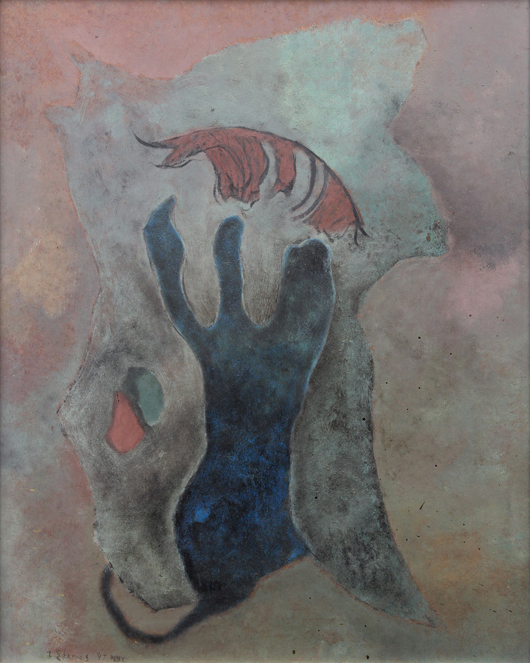
Highlighting the 20th century American paintings category is Theodoros Stamos’ (American/Greek, 1922-1997) ‘Petroglyph’ an oil on Masonite being offered for $30,000-$50,000. Clars Auction Gallery image. 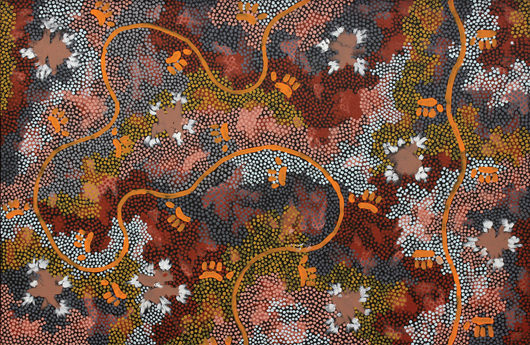
‘Possum Dreaming,’ estimated at $200,000-$300,000, is a richly colorful, yet powerful, acrylic dot painting by Aboriginal artist Clifford Possum Tjapaltjarri (1932-2002). Clars Auction Gallery image. 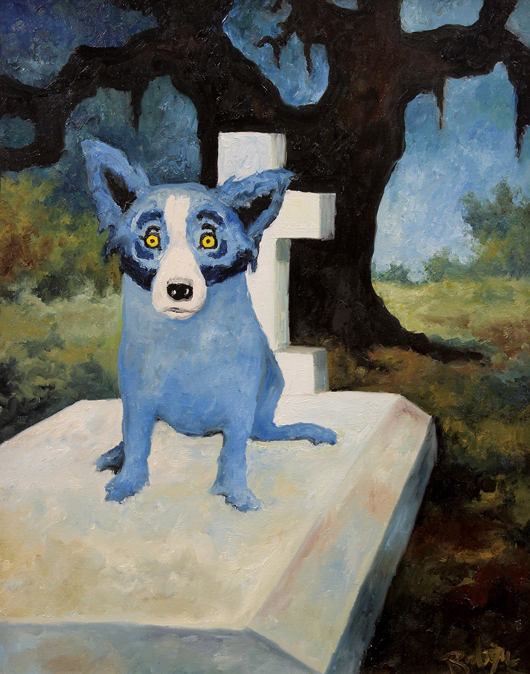
This painting of the famous Blue Dog by the late New Orleans artist George Rodrigue will be offered with an estimate of $25,000-$35,000. Clars Auction Gallery image. 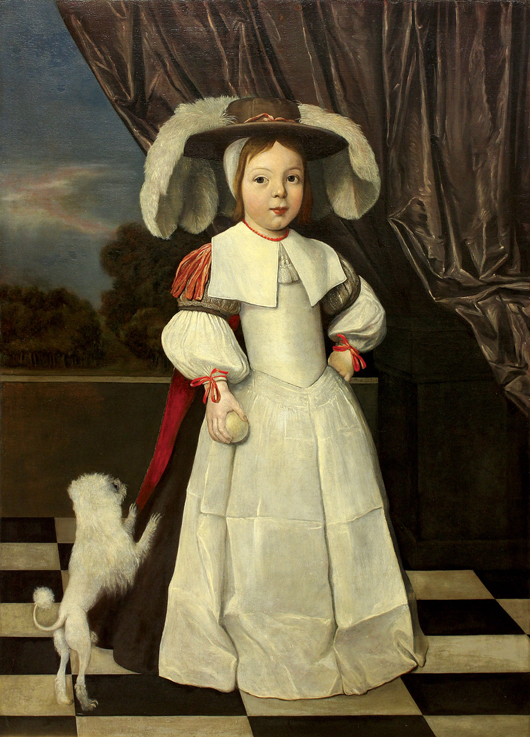
This rare 17th century painting by Dutch painter Jan Albertsz Rootius (1615-1674) titled ‘Portrait of a Young Boy,’ (1666), comes to the sale with an estimate of $20,000-$40,000. Clars Auction Gallery image. 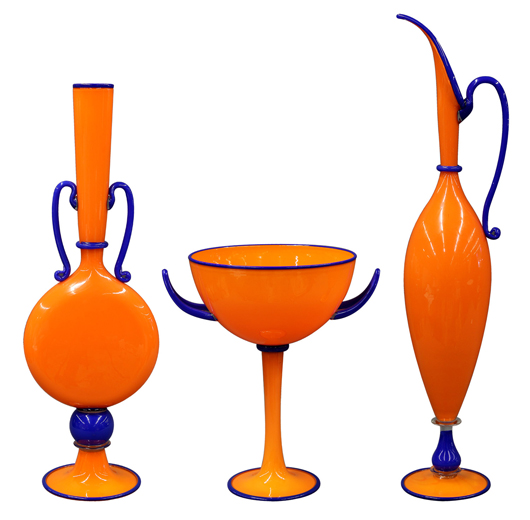
The large collection of studio glass is highlighted by this three-piece Dante Marioni group, which is estimated at $10,000-$15,000. Clars Auction Gallery image. 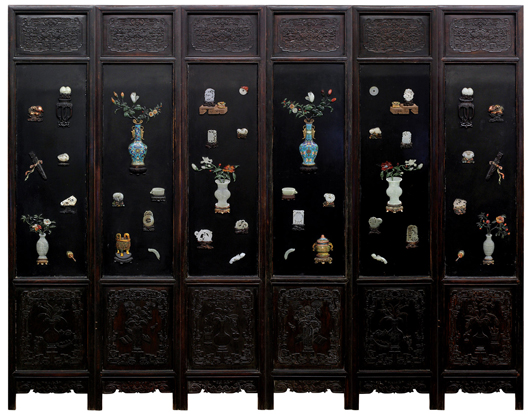
This Chinese six-panel inlaid lacquer screen with various scholar’s items and bouquets of flowers in jade, stone, wood and cloisonné inlay, is estimated at $10,000-$20,000. Clars Auction Gallery image. 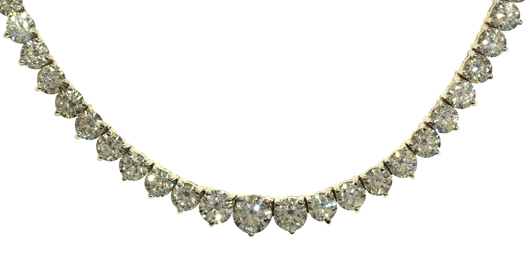
This 14K white gold Riviera necklace is dripping in diamonds weighing approximately 29.35 carats. This piece is expected to achieve $30,000-$50,000. Clars Auction Gallery image.



